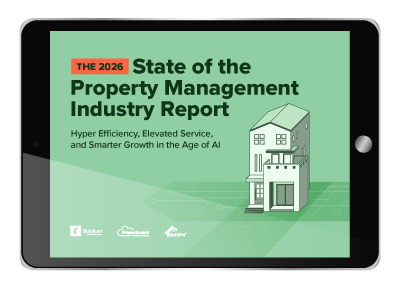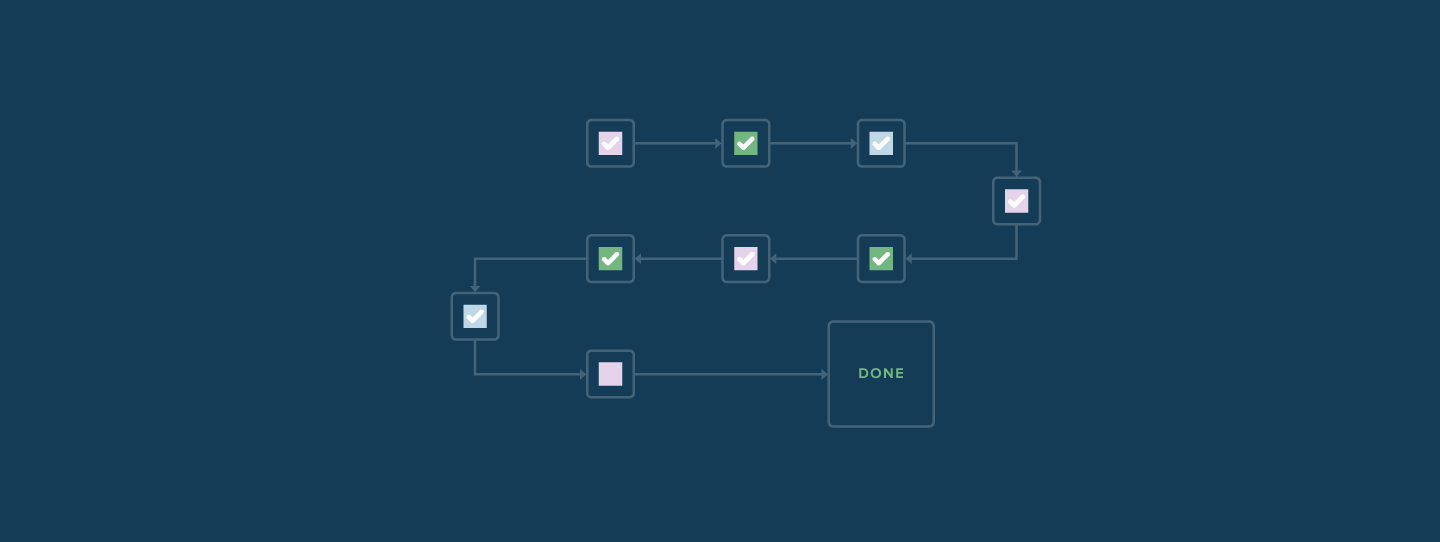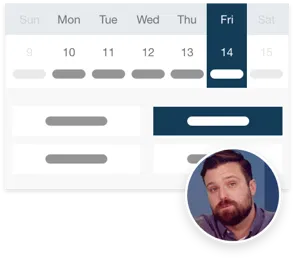It’s no secret that rental maintenance requires careful coordination with tenants, vendors, and owners. It’s also time-sensitive—because delays can frustrate residents, stall turnovers, and lead to bigger, more expensive problems. In fact, research shows that emergency repairs can cost 3 to 5 times more than planned, routine maintenance. That’s why you must follow proven workflows—to keep work orders from falling through the cracks and snowballing into larger issues.
Automated Maintenance
Track every maintenance request, schedule repairs, and pay vendors all in one place.
Learn MoreWe sat down with property management and process solutions consultant Kelli Segretto of K Segretto Consulting to tap into her 20+ years of experience within multifamily, single family, and LIHTC property management. She shared the three most important property maintenance management workflows every property manager should follow and how to implement them.
Types of Property Maintenance Property Managers Handle
Property maintenance workflows help you systematically handle the four main types of maintenance work every property manager deals with:
- Routine maintenance: Regular tasks such as landscaping, pest control, and cleaning common areas
- Preventive maintenance: Proactive work to prevent problems, like servicing HVAC systems before they fail.
- Corrective maintenance: Fixing broken items such as leaky faucets or malfunctioning appliances
- Emergency maintenance: Urgent repairs that can’t wait, such as burst pipes or heating system failures
Starting From Square One: Getting Organized
When you’re starting out as a property manager, you may be handling a lot of work orders yourself or outsourcing them to vendors as needed. That can work for a while, but eventually you’ll want a repeatable workflow to scale your business.
Start by documenting how you’re currently handling property maintenance. Then make minor adjustments and tweaks. This gives you a preliminary maintenance management workflow you can improve over time.
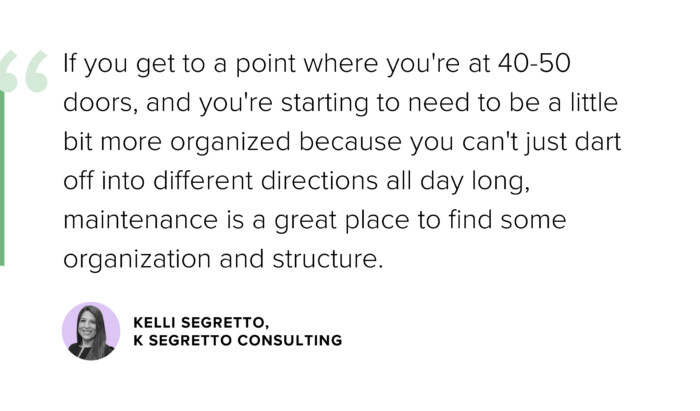
Three Maintenance Workflows Every Property Manager Must Have
That said, you need three main types of maintenance workflows:

- Work orders: Your go-to workflow for everyday maintenance requests. How do you take a tenant’s ticket from submission to resolution—without letting anything fall through the cracks?
- Turnovers: The step-by-step process for getting a unit rent-ready after a move-out or when onboarding a new property.
- Large projects: For bigger, high-cost jobs like window replacements or kitchen remodels, this workflow helps you plan, track progress, and stay on budget.
Next, we’ll outline what to include in each of these three property maintenance management workflows.
The Work Order Workflow: A Step-by-Step Guide
Work orders are the most common type of maintenance you deal with as a property manager. As a result, it’s important to have a robust workflow for handling them.
1. Receive Maintenance Request
As a property manager, you typically get work orders by phone or an online tenant portal. Either way, be sure to collect them in a central software where you can track them. Then confirm to tenants that you’ve received their request and it’s being processed.
Pro tip: Buildium’s maintenance request features make it easy to accept, assign, and track multiple work orders on a central online platform.
2. Review and Troubleshoot
Once a work order comes in, start by making sure it’s clear. If you’re not sure what the issue is, chances are your vendor won’t be either. Take a moment to clarify the request before anything gets scheduled.
In some cases, you can resolve the issue remotely. For example, if a circuit breaker tripped or a garbage disposal is clogged, you can troubleshoot with the tenant and instruct them on how they can fix the problem themselves. This saves you from needing to dispatch a vendor.
3. Schedule and Coordinate Repair
If the issue can’t be resolved remotely, dispatch a vendor. You can have them coordinate a repair time with the tenant directly or act as the middleman by getting the vendor’s availability and scheduling with the tenant yourself.
Note: Unless the owner has a sufficient maintenance reserve fund from which you are authorized to pull, you may also need to secure the owner’s approval and funding before dispatching vendors.
4. Verify Work Completion
Property managers should always follow up with tenants to confirm that a work order is completed in a timely, clean, and professional way. This brings the property maintenance request full circle and lets you get the tenant’s feedback. When tracking average tenant satisfaction scores, a rate of 90% or higher indicates that tenants are mostly satisfied.
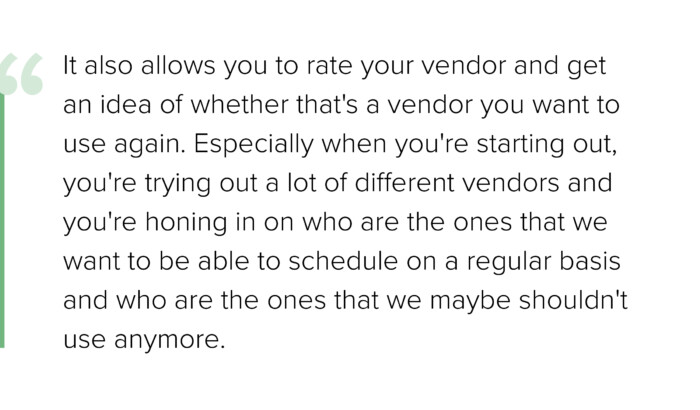
5. Pay Vendors
Finally, remind the vendor to send an invoice if they haven’t already. Then pay them promptly from the owner’s maintenance reserve or funds secured beforehand.
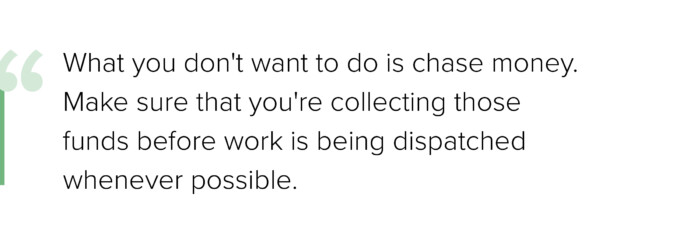
Pro tip: Buildium’s accounting features can handle multiple invoices that automatically integrate with work orders, making vendor payments easier.
The Turnover Workflow: A Step-by-Step Guide
Unit turnover or make-ready workflows can vary widely, but they typically include these steps:
1. Receive Keys
Turnovers are triggered when a tenant moves out of an existing property or a new property is added to your portfolio. Either way, you’ll receive keys to access the unit so the work can start.
2. Evaluate Scope of Work
Walk through the property to determine what needs to be done (aka the scope of work). For example, does the property need to be painted? Are there utilities that need to be turned on? Does the landscaping need attention? Take notes on what materials and vendors you need.
While you’re at it, consider optional improvements to the property, such as upgrading the cabinets, flooring, or fixtures to raise the rental’s value. Then get the owner’s approval.
3. Dispatch Vendors
After determining the scope of work, assign and schedule maintenance tasks with the appropriate vendors or in-house staff.
Pro tip: Use Buildium’s vendor profile features to organize and rate vendors, so you can quickly assign work orders to the best team for the job.
4. Perform a Quality Check
Conduct a final walkthrough to check that all maintenance work was completed as agreed. 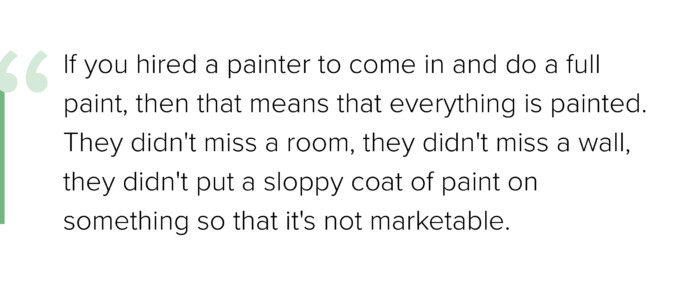
5. Mark Property as Market-Ready
Once the property passes inspection, mark it as available for listing to new tenants.
Note: The entire turnaround process usually takes about 3 days for multifamily properties and 1-2 weeks for single-family rentals. However, the shorter the turnaround time, the fewer vacancy costs the owner incurs. So build strong relationships with reliable vendors who can deliver quality work quickly.
The Large Project Workflow: A Step-by-Step Guide
What counts as a large maintenance project varies, but it’s crucial to budget for them. As a general rule, property managers should aim to set aside 1% of a property’s purchase value for annual maintenance costs. Some property managers define it as any project that exceeds a certain cost (e.g., $5,000) or duration (e.g., two weeks). However, you choose to define it, here are the steps involved:
1. Define Project Scope
As in the turnaround workflow, you must first settle the scope of work. Determine what needs to be done, who’s the best vendor for the job, and how much time and money it’ll cost.
Typically, this involves getting multiple bids from vendors by meeting them on site or giving them property access (e.g., via lockbox) so they can provide an estimate. From there, you can compile and compare bids.
2. Get Owner Approval
Present the owner with a final project estimate along with your vendor recommendation.
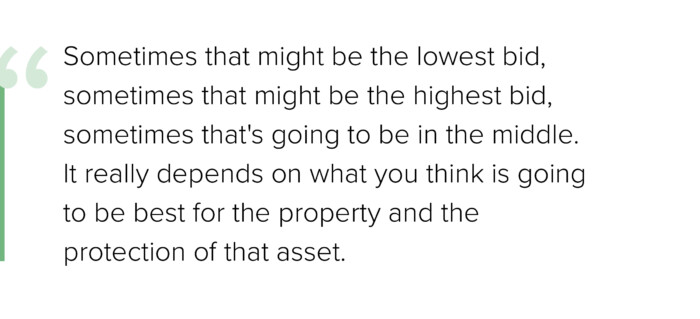
3. Collect Owner Funds and Schedule Vendors
Once you have the owner’s approval, collect funds from them to pay for the project. With Buildium, you can do this directly through their owner portal.
Next, schedule the work with the selected vendors. If this is your first time working with them, check that you have all necessary contracts, insurance, and documents in place.
4. Execute and Oversee Project
At this point, you can let the project begin. Regularly check in on the project’s progress so that you can update the owner on milestones and any setbacks.
In addition, stay in close contact with tenants and vendors throughout. That way, you can address any questions or concerns quickly to minimize delays or conflicts.
5. Do a Final Inspection and Pay Vendors
Once the vendor notifies you that the job is done, do a final inspection. Check that the work is complete and the job site is clean. This is a step that property managers often miss.
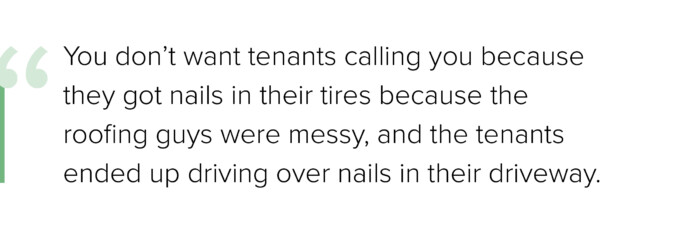
Lastly, make sure to pay your vendors on time. As Segretto points out, timely payments build trust and loyalty—making vendors more likely to prioritize your jobs and respond quickly when you need them.
Choosing Between In-House vs Outsourced Maintenance
One of the big questions we all face is whether to build an in-house maintenance team or rely on outside vendors. There’s no single right answer. It really depends on your portfolio and business goals.
In-house maintenance benefits:
- More control over scheduling and quality
- Faster response times for routine requests
- Works well if you have units clustered in one area
Outsourced maintenance benefits:
- No payroll, training, or staffing overhead
- Access to specialized experts for plumbing, electrical work, etc.
- Pay only when you need the service
Many property managers find a hybrid approach works best: an in-house person for small, everyday tasks and trusted vendors for bigger or specialized jobs.
Software to Help with Property Maintenance Management Workflows
While you can run through property maintenance management workflows from paper checklists, it’s much easier to run through them with customizable property management software.
With Buildium’s all-in-one maintenance management platform, you can coordinate with tenants, vendors, and owners at every stage of the maintenance life cycle. Whether you’re handling work orders, unit turnarounds, or large projects, Buildium can keep you organized and on track.
Sign up for your free 14-day trial or schedule a personalized demo today to see how Buildium can take your property maintenance management workflows to the next level.
Frequently Asked Questions About Property Maintenance Workflows
How Do I Prioritize Maintenance Requests?
Categorize requests by urgency: emergency issues affecting safety come first, followed by urgent non-emergency repairs, then routine requests. Communicate this system to residents to manage expectations.
What Is the Difference Between Preventive and Reactive Maintenance?
Reactive maintenance happens after something breaks, while preventive maintenance involves regular inspections to catch issues early. A good maintenance plan includes both approaches; while the optimal mix depends on the portfolio, one general rule of thumb suggests the default ratio is 80/20 for preventive versus corrective maintenance.
How Long Should a Typical Maintenance Workflow Take?
Work orders typically take 24-72 hours, turnovers need a few days to two weeks, and large projects vary by complexity. Clear timeline communication with residents and owners is key.
Read more on Maintenance